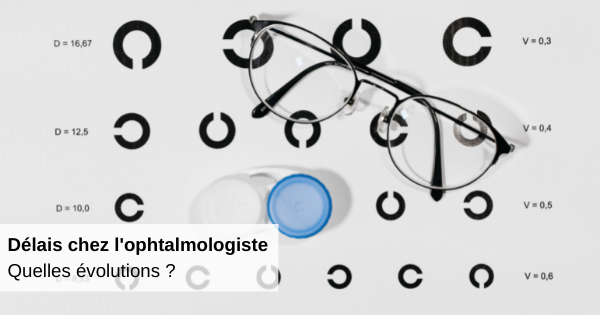Deadlines for the ophthalmologist: what changes?

For several years now, making an appointment with an ophthalmologist can be compared to a real obstacle course. However, this is the practitioner who has the record for the number of procedures performed, and their activity time has greatly increased over the past decade. The delays at the ophthalmologist , apart from an emergency, are often discouraging as demand grows. What are the latest developments, and what can we expect in the years to come?
Deadlines for the ophthalmologist: how did we get there?
Making an appointment with a specialist is not always easy, but some specialties are doing relatively well. This is the case of ENT for example, whose average waiting time is around two weeks.
To get an appointment with an ophthalmologist , you have to multiply this time at least by five, and sometimes by ten. However, the average weekly working time of the latter is about fifty hours. The activity of an ophthalmologist has increased by 30% in ten years but it is still difficult to meet the demand.
[Embed] https://www.youtube.com / watch? v = 8ekwvxeN2Hk [/ embed]
The reason for these extended delays is mathematical. We are sorely lacking in staff. But why ? A first element of answer is found in the numerus clausus established in France in 1971. This Latin term means the limitation of the students authorized to compete in the field of health. From 2021, there will no longer be an order defining the outlines of the numerus clausus, in order to deal with a possible shortage of caregivers.
This concept of limitation has left aside certain less popular specialties such as ophthalmology , in particular to the benefit of general medicine.
Another measure, the mechanism for early cessation of activity (MICA) harmed the sector, since between 1997 and 2003, more than 200 liberal left in pre- retirement. The end of this system will not prevent 72% of ophthalmologists from retiring in 2008 and 2025.
In the end, we train around a hundred ophthalmologists per year while, to meet the needs, it would need at least double.
In the future, what developments?
It is very difficult to rely on one scenario over another. The help of orthoptists will help reduce waiting times. Today, many actors note that for a positive evolution to take place, the world of ophthalmology must question itself. While technological developments tend more towards refractive surgery , the vast majority of the sector still leans towards prescription of correction. This deserves debate.
A debate which evolves towards the complementarity between the ophthalmologist and the optician . For the magazine l'Essentiel de l'Optique , "the hierarchical claim to direct the entire care pathway for the ametropic patient seems today disproportionate given the autonomy and complementarity of the two professions. hierarchy by the duration of the initial studies is an anachronism which prevents to think the necessary evolutions ".

And while we see an improvement in average lead times of around 10%, they are still far too long to meet demand. The sector also expects an increase of around 5% of the workforce by 2023. But these forecasts can be explained by the contribution and arrival of foreign practitioners or those continuing their activity after 65 years.
Faced with the aging of the population, and the expansion of myopia , there are for the moment few reasons for satisfaction as for the evolution of the delays at the ophthalmologist . Workforce management is of course the first avenue to work on, but the benefits will only be felt in the long term. Some therefore advocate a change of direction, to promote reparation more widely to the detriment of correction.
A decision which is in the hands of the public authorities, as do the expectations of the actors optics.
Sources: Essential optics, SNOF


